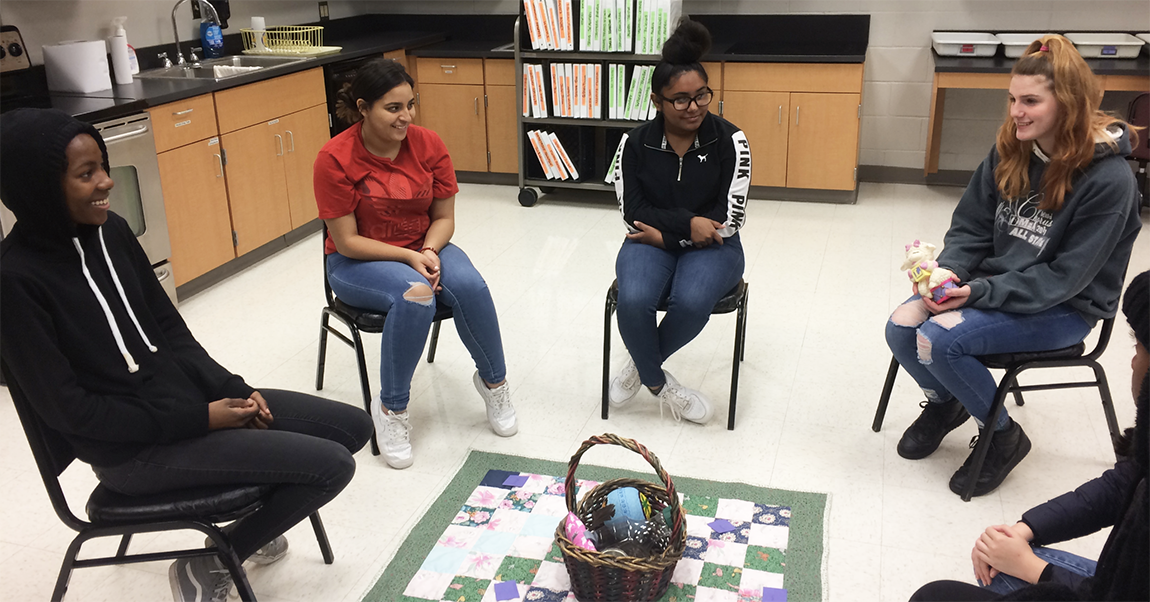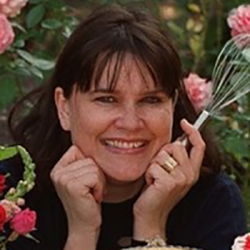
Last summer at the 2019 PBL World Conference hosted by PBLWorks, I attended a session about restorative circles that has deeply impacted my teaching practices.
It took me awhile to wrap my head around the word “restorative”. Restore means to bring something back to its original state or reestablish it. Restorative means to restore health, a sense of well-being or strength. As I sat in the restorative circle session, I struggled with the name of the practice and the purpose of these circles. What were we trying to bring back or restore? I even found myself frustrated because of the confusion.
Pushing past that, I was able to ask enough clarifying questions to synthesize the “big idea”: through the practice of these circles, my students and I can build deeper relationships through sharing, listening and having the experience of being heard. All through simple conversations but with a framework that allows for respect and safety.
These practices have roots in indigenous cultures. The inclusive design for restorative circle is the same. Everyone is in a circle, facing where they can see each other’s eyes. There is no hierarchy, and everyone can use their voice through the use of a talking piece.
Circles build capacity for students in our classroom to have just about any conversation, especially those important and emotional ones (i.e., restorative).
Hence, the circle itself becomes restorative; it helps bring the classroom/students back to a state of health, well-being and strength for learning.
Think about all the circles in education where students are grouped to construct meaning and share thoughts: Fishbowls, Round Robins, Socratic Seminars, Tuning Protocols, Think-Pair-Shares, etc. For each of these activities, students are arranged and prepared in a certain way with or without additional props or resources to learn or practice concepts. The same thing goes for restorative circles. Once I made this academic connection, it was much easier to process this as an instructional strategy to help empower my students and build a culture of acceptance.
Ready to implement this new learning in my classroom, I combined this tool with an upcoming project: the Students Rebuild Hunger Challenge.
This will be my 4th year to participate in one of the amazing Students Rebuild Challenges, where students become change makers through learning and creative efforts that get matched with funding to impact a critical issue. This year, the theme is fighting hunger and malnutrition. I was a part of a team of teachers that worked with PBL Works National Faculty over the summer to create a PBL unit, the Hunger Project, in support of this initiative.
I knew that hunger can be a sensitive and highly personal topic. People can be hungry for a lot of reasons. They skip meals, are dieting, or just are too busy working to make time to eat. For others, there is no food available. They could be homeless, live in a food desert, not have enough money to buy food and pay expenses, or not know how to prepare a meal with the food that is available.
I teach in an inner-city school where there is a lot of hunger. We have a food pantry so students can take food home for the weekend, but there is a lot of food not taken because students don’t know what it is or how to prepare it. There are also young people who are hungry and go without because of shame. They don’t want anyone to know they are hungry. Because of the inspirational and sensitive topic this year, I felt that introducing restorative circles to the classroom learning environment would be particularly powerful strategy to build highly effective, collaborative teams able to have difficult conversations.
Each time we meet, we share deeper and more reflective thoughts.
The circles are not meant to have a discussion per se, more like a collaborative story of thoughts – almost like a poem that is created in the circle and stays in the circle.
You’ve probably heard the expression, ”What happens in Vegas stays in Vegas”? The discussions in the circle stay in the circle. The idea is not to solve someone else’s problems, but to share and affirm or appreciate the thoughts of others. Circle participants practice active listening, which means you are not trying to think of a response to what someone says, just be still and attentive.
An unexpected outcome is a general sense of calm after the circle session. Instead of adding a burden on one’s shoulders, it is a place of trust and respect—a place for students to be reflective and leave those thoughts in the circle.
For detailed steps on how I structure and facilitate our restorative circles, see this Google Doc.

